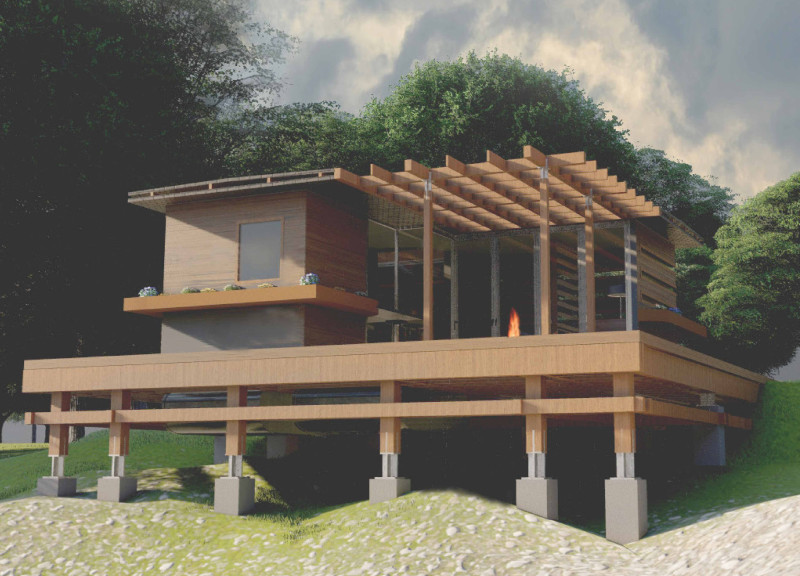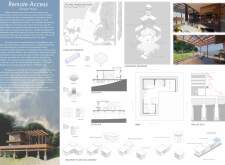5 key facts about this project
The project features an innovative modular design that reflects a grid-based approach. This approach facilitates the easy construction and customization of the living spaces according to the inhabitants' needs. The layout consists of two distinct wings, creating a balanced composition that integrates both private and communal areas. Central to the design is a shared space, which serves as a hub for interaction and collaboration, embodying the shift towards community-oriented living. The incorporation of flexible features, such as pocket doors, supports this idea by allowing the inhabitants to adapt the space as required, whether for gatherings or personal retreats.
Materiality plays a crucial role in the overall character of the Remote Access Compact House. The project strategically employs locally sourced wood for structural and aesthetic purposes, enhancing the warmth and natural appeal of the dwelling. Prefabricated components optimize construction time and minimize waste, aligning with sustainable building practices. Additionally, the installation of photovoltaic panels on the roof embodies a commitment to renewable energy, enabling the house to function independently while reducing its carbon footprint. Water management is also a key consideration, with a rainwater harvesting system incorporated into the design, showcasing an efficient approach to resource management.
One of the unique aspects of this architectural design is its adaptability to changing living conditions. The environment in which the house is placed encourages a seamless transition between indoor and outdoor spaces. Expansive glazing is utilized to maximize natural light and provide uninterrupted views of the surrounding landscape, fostering a connection with nature. The inclusion of terraced outdoor areas further enhances the living experience, promoting an active lifestyle and outdoor engagement for residents.
The Remote Access Compact House reflects a pragmatic approach to addressing the challenges of modern housing, particularly concerning affordability, ecological sustainability, and the needs of remote workers. Its emphasis on community integration and flexibility positions it as a viable model for future residential developments, encouraging similar ideologies to take root in other regions. The design articulates a vision for a living space that is not only functional but also nurturing, striking a balance between personal comfort and societal needs.
Readers interested in exploring this project may find it enriching to examine architectural plans, architectural sections, and various architectural designs that contribute to a comprehensive understanding of the innovative ideas embedded within this project. The thoughtful nature of the design invites further inquiry and discussion, making it an engaging case study for those keen on contemporary architecture and sustainable living.























